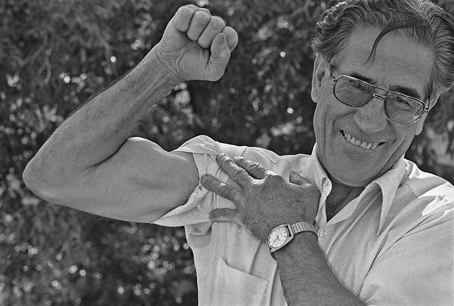Today is Pioneer Day in Utah, at which time we pause to honor our sainted ancestors who arrived in the valley back on July 24, 1847. Missing from this morning’s parade was any float commemorating my own forebears, who arrived much later, pushing ore carts instead of handcarts. Understand, Brigham Young frowned upon mining; he thought the industry attracted the wrong sort of characters, and of course, he was right. I’m thinking of my maternal grandfather John Wesley Morton, who along with his partner Nick Rimando, was a contract miner in Eureka, Utah. Neither man was religious—in fact, Rimando had a sideline as a saloon keeper.
Although the mining industry wasn’t represented in the parade, there was a float that featured a pair of young Mormon boys drilling holes in a block of papier-mâché faux granite. One was holding the steel bit steady while the other pounded away on his fingers, never once striking the bit properly. Luckily for the holder, it was a rubber mallet and not a five-pound sledge. I pitied the poor deacon whose fingers were taking a pounding, but at the same time I couldn’t help wondering how he and his partner could be so woefully ignorant of how blasting holes are drilled. Good thing there was no dynamite involved!

When I think of hard rock drilling, the name Louis Gibellini immediately springs to mind. Like my grandfather’s partner Nick Rimando, Louis was Italian and also ran a saloon—in Eureka, Nevada. Louis is remembered as Nevada’s greatest competitive single jack driller, a distinction he won when he was in his sixties. Watching Louis in action, I felt cheated that I never knew my grandfather, who died prematurely of silicosis, the result of inhaling rock dust.
Of course, Mormon pioneers also tended to die young—the women in childbirth, the menfolk from neurosis of the liver. Better, I think, to have spent less time sneaking drinks behind the barn and more time in saloons, raising a glass with us heathen folk on what we call “Pie And Beer Day.”